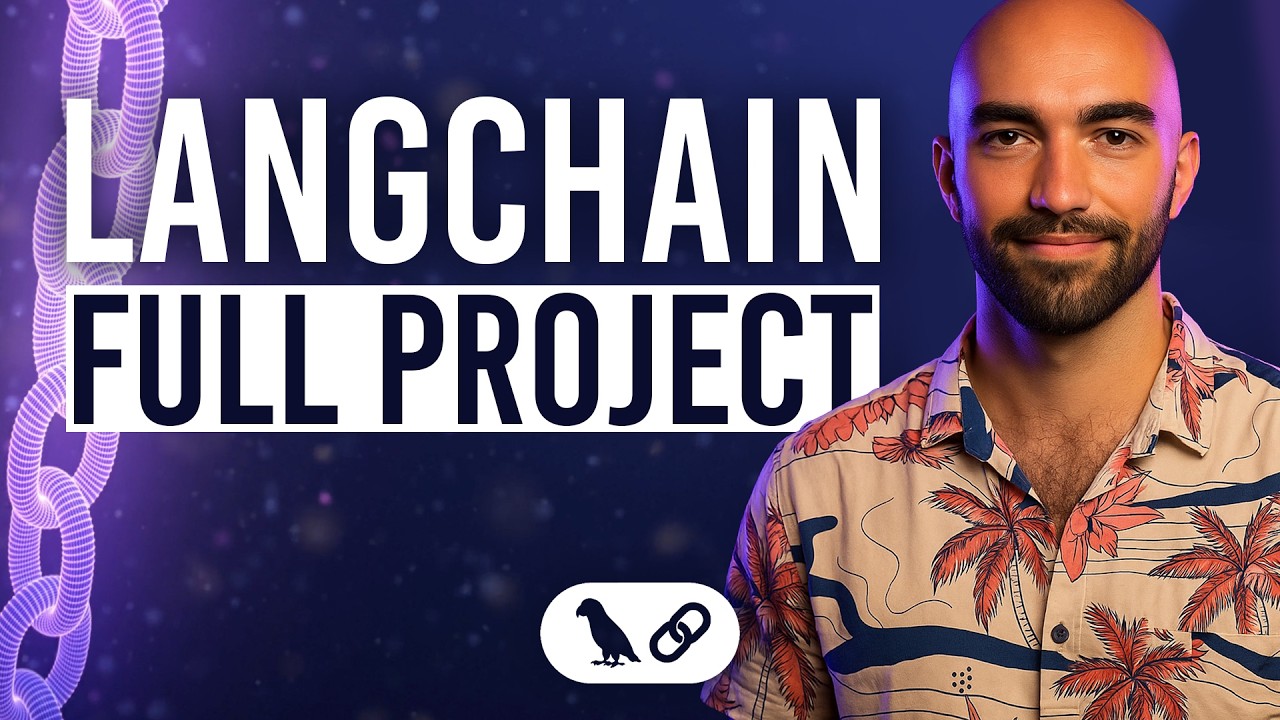The video provides a comprehensive walkthrough of building a backend API with FastAPI for an AI-powered chat application using LangChain, featuring asynchronous streaming, parallel tool execution, and real-time response display. It highlights key implementations such as integrating asynchronous SERP API calls and managing tool interactions, culminating in a fully functional app that handles complex queries with dynamic tool usage and encourages further extension.
In the final capstone chapter of the LangChain course, the instructor guides viewers through building a fully functional chat application that leverages AI agents with tool access. This chat app can handle complex queries by utilizing various tools in parallel, streaming responses in real-time to the user interface. The backend API, built with FastAPI, manages asynchronous streaming of tokens from the language model, allowing the frontend to display answers and tool usage dynamically. The instructor emphasizes that while the frontend code is available, the focus of this chapter is on constructing the backend API that powers the application.
The setup process involves cloning the course repository, installing necessary Python packages using the uv tool, and configuring environment variables for API keys such as OpenAI and SERP API. Once the environment is ready, the FastAPI server can be launched, exposing an endpoint that streams responses from the language model. The instructor demonstrates how the streaming works by running a test notebook that sends queries and iterates over the streamed tokens, showing how special tokens help the frontend parse and display tool usage and final answers in a structured format.
Delving into the API code, the instructor explains the asynchronous architecture that enables parallel tool execution. The API uses an async generator to yield tokens as they arrive, with careful handling of tool call tokens and parameters to maintain synchronization between AI messages and tool responses. The agent executor function orchestrates the process by receiving queries, invoking the language model, parsing tool calls, executing those tools asynchronously using asyncio.gather, and managing the conversation history to maintain context. Special attention is given to ensuring tool call and response pairs are correctly ordered to prevent deadlocks or hanging responses.
A significant portion of the walkthrough focuses on the SERP API tool integration, highlighting the transition from a synchronous to an asynchronous implementation. Since the official SERP API SDK does not support async calls, the instructor demonstrates how to use the aiohttp library to perform asynchronous HTTP requests, enabling the tool to fit seamlessly into the async agent framework. The results from the SERP API are parsed into structured article objects for cleaner output, and the asynchronous tool is wrapped appropriately to be used by the agent executor.
Finally, the instructor runs the full application, showcasing its capabilities with various example queries that trigger different tools, including arithmetic operations and live web searches. The app streams intermediate steps and final answers, displaying tool usage and citations in real-time. The course concludes by encouraging learners to extend the application by adding new tools and experimenting further, emphasizing that this project serves as a foundation for building more advanced AI-powered applications. The instructor thanks viewers for completing the course and encourages them to continue exploring the possibilities of AI development.
